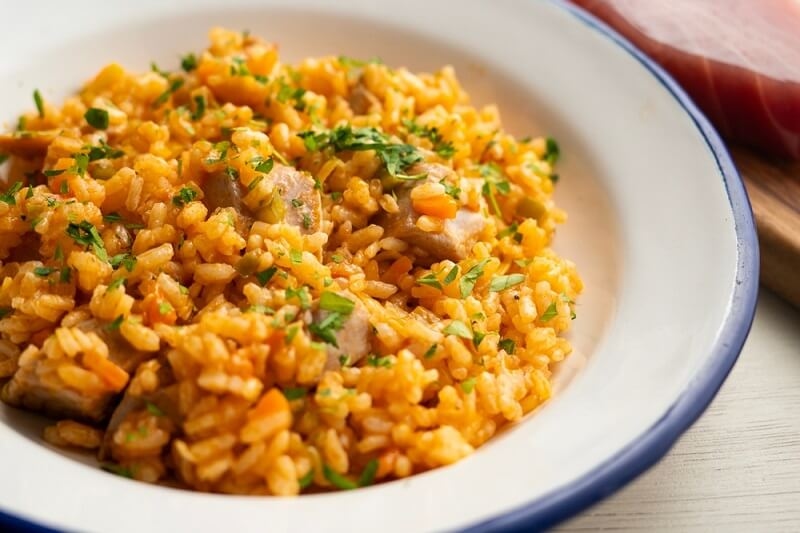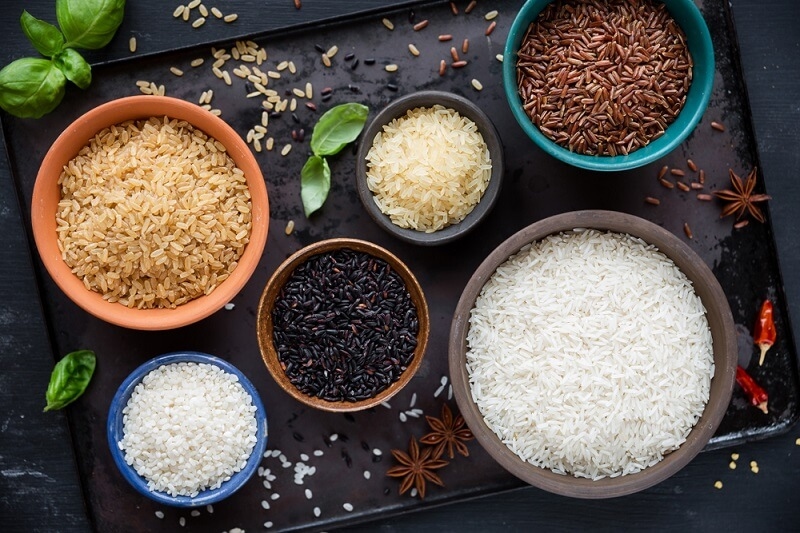
Preparing Spain’s most popular dish, paella, requires choosing the correct rice. Selecting the right rice is more critical than picking the ingredients, like fresh seafood, chicken, or saffron. The best rice for your paella is the only rice that can taste great while keeping its shape. Many home cooks ask us if bomba or arborio is better or if a substitution option works. We’ll provide a complete guide on bomba rice, paella rice vs. arborio, and functional paella rice substitutes, and show you how to cook paella rice with helpful fluffy paella tips to ensure you can tell the difference. By the end of this guide, you will know which rice is the best to help you serve amazing paella.

Rice is the spirit of paella. While paella is not the only rice dish, its rice must absorb broth and flavor while staying tender and without being sticky. Your celebratory Spanish feast can be an undesirable sticky disaster if the rice isn't right.
The correct rice for paella should do the following:
This balance makes just bomba rice, calasparra rice, and short-grain varieties right.
Without a detailed discussion of bomba rice, no debate about the right rice for paella would be complete. Bomba is a short-grain rice grown in Spain. Popular for its capacity to absorb up to three times its volume in broth, bomba is ideal for cooking paella. It has unique characteristics from other grains, so it keeps its firmness in the grain and avoids clumping to the point of mushy sogginess.
Key characteristics of bomba rice:
Bomba rice eliminates a lot of guesswork, especially for the novice. While bomba rice may be priced at a premium compared to other rice types, the payoff is worth the price.
Many cooks compare paella rice to Arborio rice and wonder if Arborio, the rice for risotto, is a substitute for paella rice. Arborio may be easier to find, but the rice reacts differently.
If you want the authentic paella experience, you will use paella rice. If Arborio is your only option, keep your liquid ratios low so it is not as creamy.
Not everyone can find bomba rice locally. Fortunately, several paella rice substitutes will do just fine:
While none of these substitutes will give you the same texture as bomba, they will get you close enough to make a beautiful paella anywhere.
Understanding the process of cooking paella rice is an essential first step to ensure you achieve the best result. No matter how good your paella rice is, you can end up with soggy or undercooked rice if you do not cook it properly. Here's my orderly guide to cooking paella rice.
1. Sauté the rice: The first step is to lightly toast the rice in olive oil with the onions and garlic before adding the stock.
2. Gradually add the broth: Always evenly distribute the hot broth infused with saffron without disturbing the rice.
3. Do not stir the rice: Paella is not risotto, and mixing the rice will ruin the socarrat crust.
4. Simmer the rice evenly: Cook on medium temperature and allow the rice to absorb the liquid slowly.
5. Let the paella rest: After cooking it, rest for five minutes so the flavors can settle and the rice can finish cooking.
We hope you will always have a delicious, perfectly cooked paella by following these five steps.
Even with bomba rice, following fluffy paella tips ensures the right consistency:
These tricks help achieve fluffy rice that’s flavorful and never sticky.
One of the most cherished elements of paella is the socarrat—the golden, crispy rice layer at the bottom. Only the best rice for paella can develop this crust without burning.
Tips for perfect socarrat:
This technique transforms paella from a simple rice dish into a true Spanish classic.
Even with the best rice for paella, mistakes can happen. Here are the most frequent errors:
Avoiding these pitfalls keeps the rice as the star of the dish.
Try cooking the same recipe using both types of rice to compare paella rice with Arborio. Arborio rice will make paper with creamier textures similar to risotto. When using bomba or calasparra rice, it will make fluffy, separate grains, which is what you want for authenticity.
This test provides a nice side-by-side comparison of why bomba rice is still the best for paella rice and why Arborio can be used only as an emergency substitute.
Spain grows a few varieties of short-grain rice used for paella, besides bomba.
Spain's short-grain variety growing alone means that home cooks can choose rice varieties, but still have to select their consumption, and bomba will still be the most recognized internationally.
The secret to cooking paella is knowing how rice interacts with broth. Using saffron, smoked paprika, and a seafood broth gives depth. The ideal rice for paella can absorb these flavors into each grain.
General liquid ratios:
Pairing the right rice with the right broth sets the dish in motion.
When shopping for the best rice for paella, keep these points in mind:
Understanding labels helps you find authentic rice or good substitutes.
If you’re new to paella, mastering texture can be tricky. Here are beginner-friendly fluffy paella tips:
Starting simple helps build confidence before experimenting with complex versions.
Not all regions stock bomba rice, so paella rice substitutes may vary:
While none replicate bomba perfectly, they still deliver enjoyable results.
After exploring substitutes, it’s clear that Bomba remains unmatched. With its ability to absorb flavor, resist overcooking, and create the perfect socarrat, bomba is the best rice for paella.
While other options work in a pinch, nothing delivers the same balance of flavor and texture.
The best rice for paella defines the success of Spain’s most iconic dish. With bomba rice explained, the differences between paella rice vs. arborio, smart paella rice substitutes, guidance on how to cook paella rice, and practical fluffy paella tips, you now have everything needed to prepare authentic, delicious paella at home.
This content was created by AI